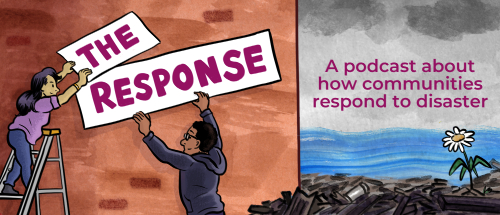I have continually been fascinated by the question of how to build a strong community through collaboration, especially in shared housing spaces. I live in San Francisco, California, which has one of the country’s largest gaps in economic inequality. This in turn is fueling gentrification and community displacement. In response, people are turning to shared living communities such as the 30-person Chateau Ubuntu, a housing cooperative that I’m a part of. As opposed to traditional top-down hierarchy that incentivizes competition, our house is a complex series of “networks” that depend on the participation and collaboration of everyone. Untangling this complicated web of networks is key to understanding how we function together.

Our structure includes three distinct frameworks: the star, chain, and all-channel networks. As the most centralized, the star network acts as a central hub that all nodes of the network are connected and communicate through. While lacking a central hub, each node along the highly stratified chain network is connected along a predetermined path that obscures associations between nodes. Finally, the all-channel network is completely decentralized where all nodes are connected and can freely interact with each other. A visual representation of the three network styles is demonstrated below by John Arquilla and David Ronfeldt in their 2001 book on networks:
We manage ourselves through seven decentralized working circles that (mostly) have free association with one another — like the all-channel network above. All circles are open for any housemate to join, and everyone must be a part of at least one circle. However, looking closer at circle operations reveal different degrees of centralized decision-making and chain communication. For example, all circles have rotating “lead” position, some of which are paid. The lead circle is responsible for facilitating that circle’s tasks alongside acting as the circle’s primary representative with the larger community. But beyond this each circle’s structure diverges, and a brief overview of each is necessary in understanding how they work together:
Recruitment: The recruitment circle manages the task of bringing new people into our home. This group acts as a star network, where the individual tasks carried out by members of the circle, such as interviewing applicants, are all communicated back through the circle’s lead. The recruitment lead then acts as a liaison between potential applicants, exiting house members, and the rest of the community.
Food: The task of sharing food — one of the powerful ways we connect and collaborate — is carried out through an “all channel” network, which helps us navigate complex logistics. All housemates pay a fee towards buying groceries in bulk — together accessing cheaper prices for groceries than we would ever find individually. The majority of our food is delivered through two local food distributors, Veritable Vegetable and Imperfect Produce. We also have deals at the Sunday farmers’ market.

Labor: The labor circle oversees our chore system to make sure the common spaces are tidy. This includes facilitating monthly deep cleaning sessions, ensuring appliances and other things in the household are functioning well, and, in conjunction with the recruitment circle, onboarding new house members.
Events: The events circle, an entity without a rigid form, organizes fun gatherings like talent shows, live music, dance classes, game nights, writing workshops, and even a live dating game show. Living together with a multitude of people from a diversity of places and cultures opens incredible opportunities for continuous education, sharing, and fun.
Sustainability: The sustainability circle, like the events circle, doesn’t have specific day-to-day tasks, but is instead responsible for lowering our household’s environmental impact.
Finances: Besides overlooking the house budget and rent collection, the finances circle is crucial for other working groups that make regular purchases — such as food and labor. While the circle itself manages the flow of funds, the whole community determines the allocation. In this sense, this circle most resembles a chain network, carrying out the decisions made by the larger community.
Community Wellness: This circle, in which I currently serve as the lead, serves as a support system that bridges the working circles and the larger community together. We act as first-line mediators in interpersonal conflict issues. If initial mediation is unsuccessful, then the issue is brought to the rest of the wellness team, and if escalation continues, it’s brought to the larger community.

Integrating all three network styles allows us to successfully maneuver the tension between having an organized framework to maintain a cohesive, happy household and one that is dynamic and open to changing needs of our housemates. However, to make this function smoothly requires buy-in from all members. We aim to reaffirm our commitment at our bi-monthly, all-house meetings, where the circles report on their progress to the entire community. We find that this is usually when most conflict arises — but we work together to address triggers and fill in gaps in our structure. Doing this ensures that we’re all taking responsibility for each other’s well-being and creating experiences that wouldn’t be possible if we went at it alone.
All images provided by Emily Bender










